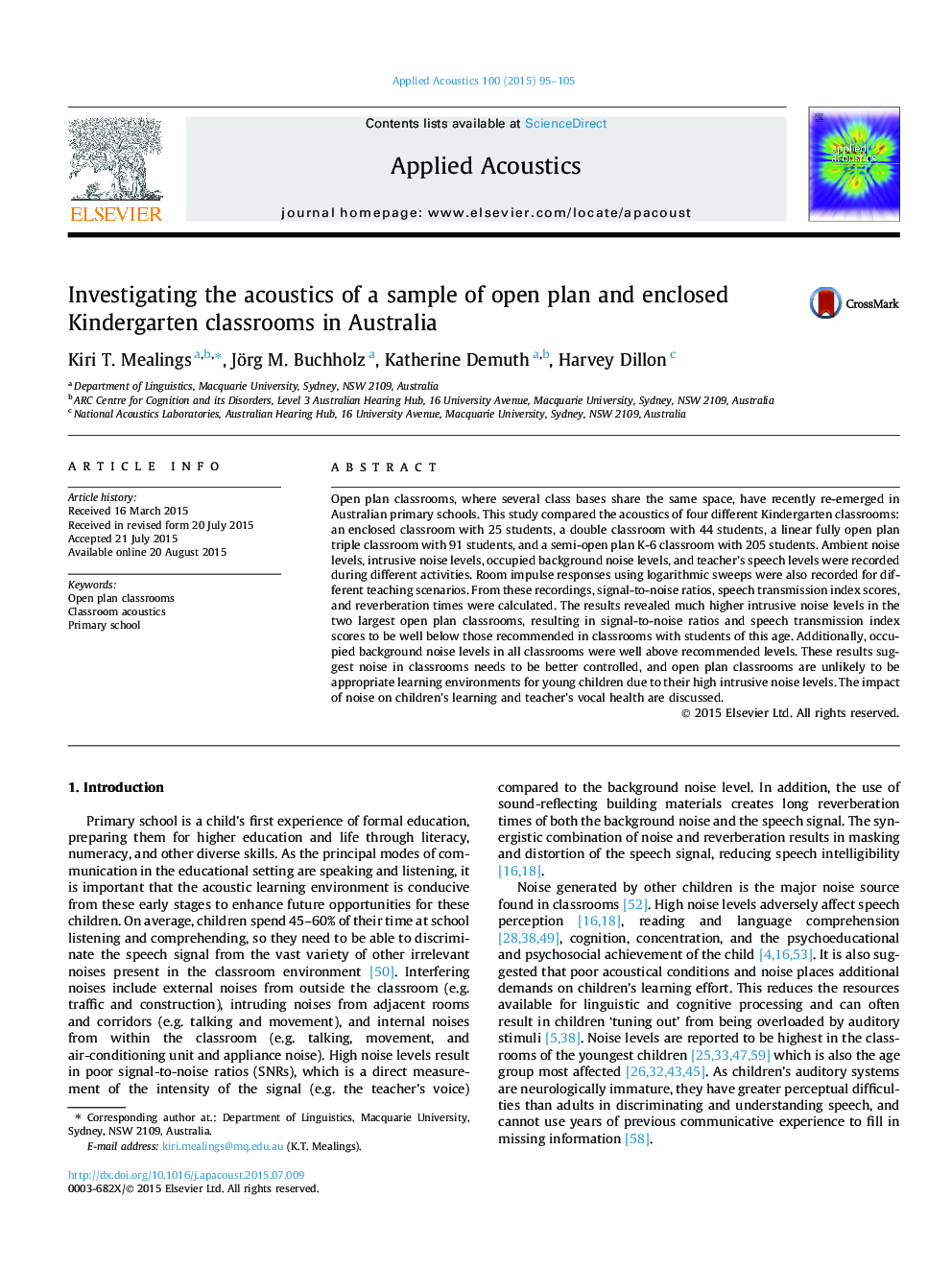| Article ID | Journal | Published Year | Pages | File Type |
|---|---|---|---|---|
| 7152655 | Applied Acoustics | 2015 | 11 Pages |
Abstract
Open plan classrooms, where several class bases share the same space, have recently re-emerged in Australian primary schools. This study compared the acoustics of four different Kindergarten classrooms: an enclosed classroom with 25 students, a double classroom with 44 students, a linear fully open plan triple classroom with 91 students, and a semi-open plan K-6 classroom with 205 students. Ambient noise levels, intrusive noise levels, occupied background noise levels, and teacher's speech levels were recorded during different activities. Room impulse responses using logarithmic sweeps were also recorded for different teaching scenarios. From these recordings, signal-to-noise ratios, speech transmission index scores, and reverberation times were calculated. The results revealed much higher intrusive noise levels in the two largest open plan classrooms, resulting in signal-to-noise ratios and speech transmission index scores to be well below those recommended in classrooms with students of this age. Additionally, occupied background noise levels in all classrooms were well above recommended levels. These results suggest noise in classrooms needs to be better controlled, and open plan classrooms are unlikely to be appropriate learning environments for young children due to their high intrusive noise levels. The impact of noise on children's learning and teacher's vocal health are discussed.
Keywords
Related Topics
Physical Sciences and Engineering
Engineering
Mechanical Engineering
Authors
Kiri T. Mealings, Jörg M. Buchholz, Katherine Demuth, Harvey Dillon,
